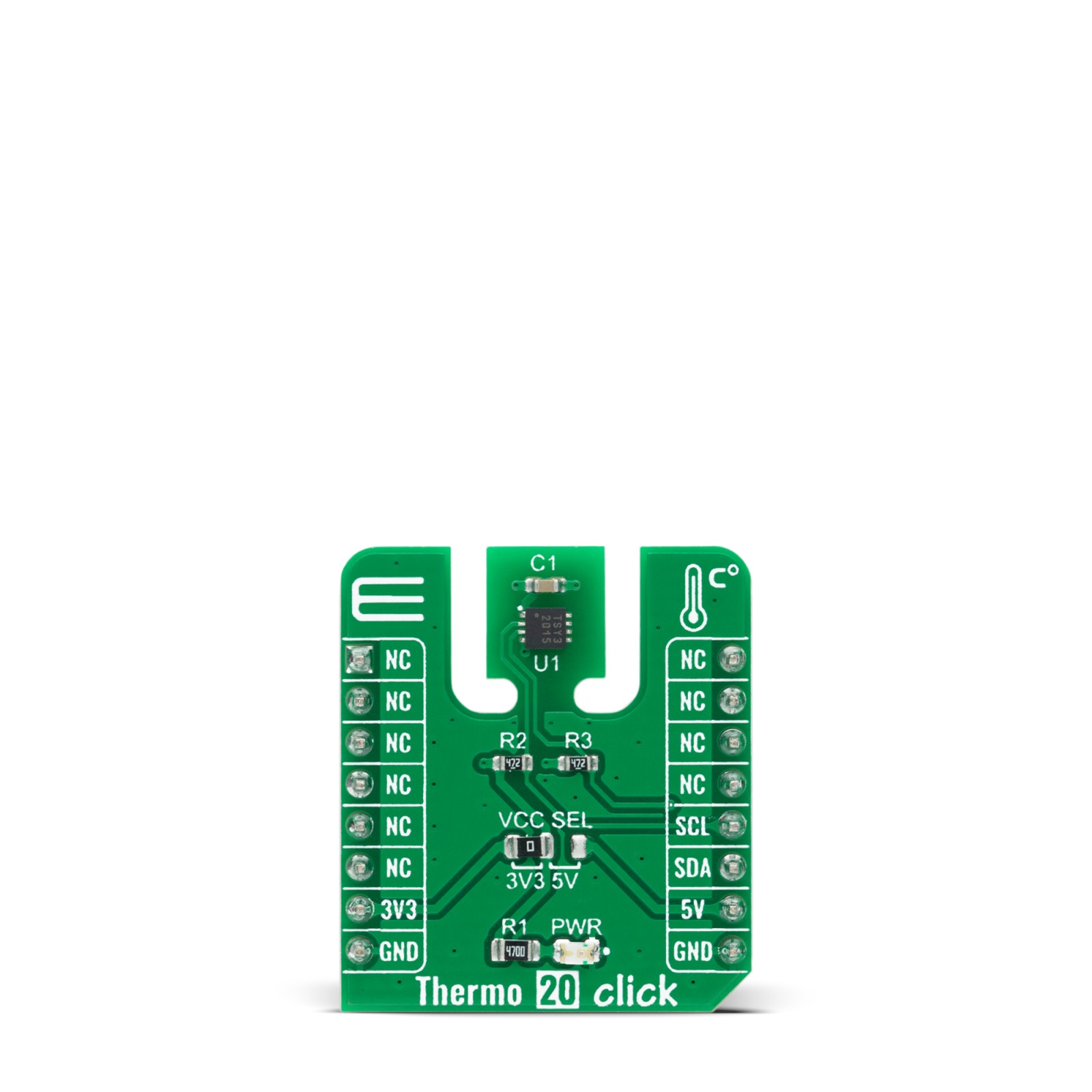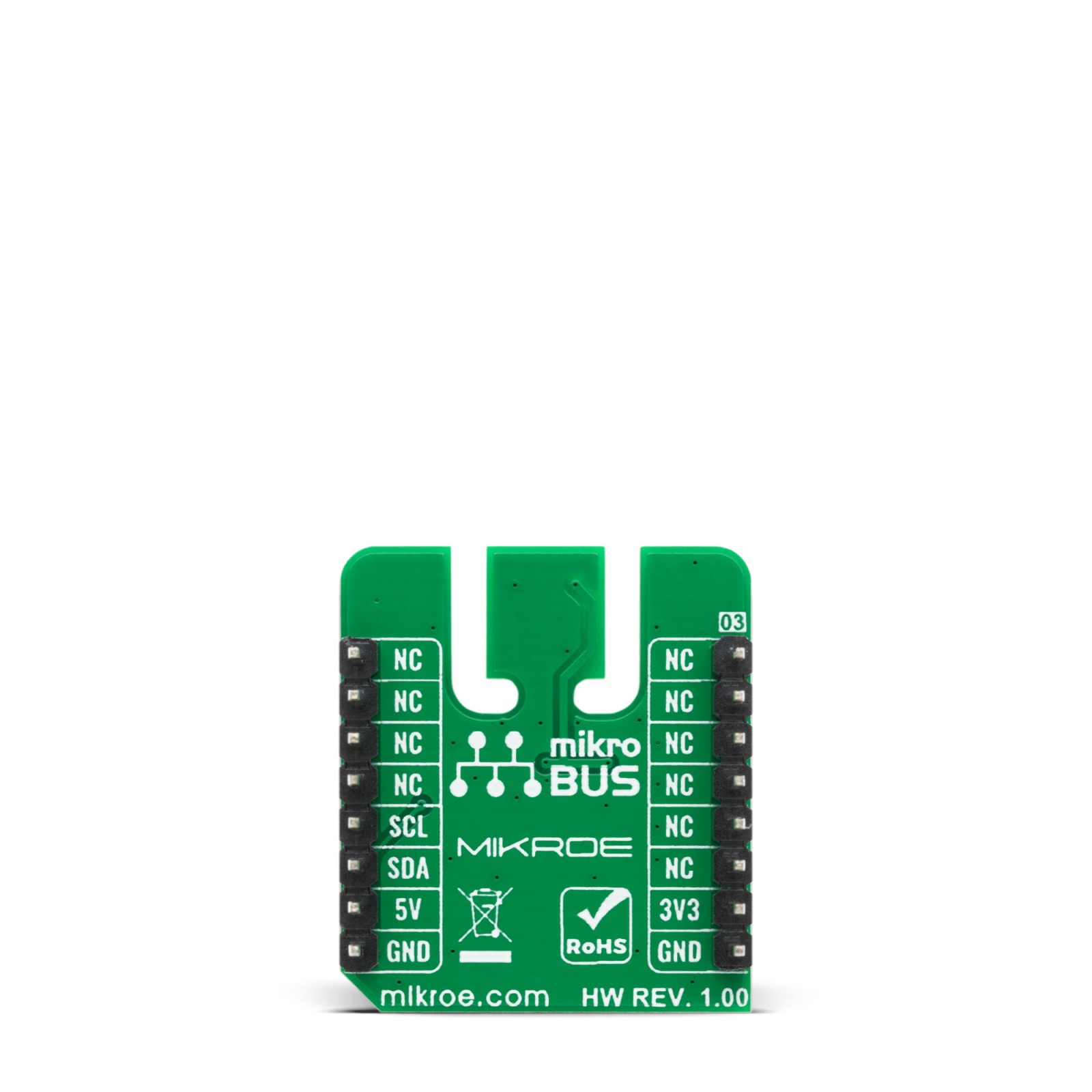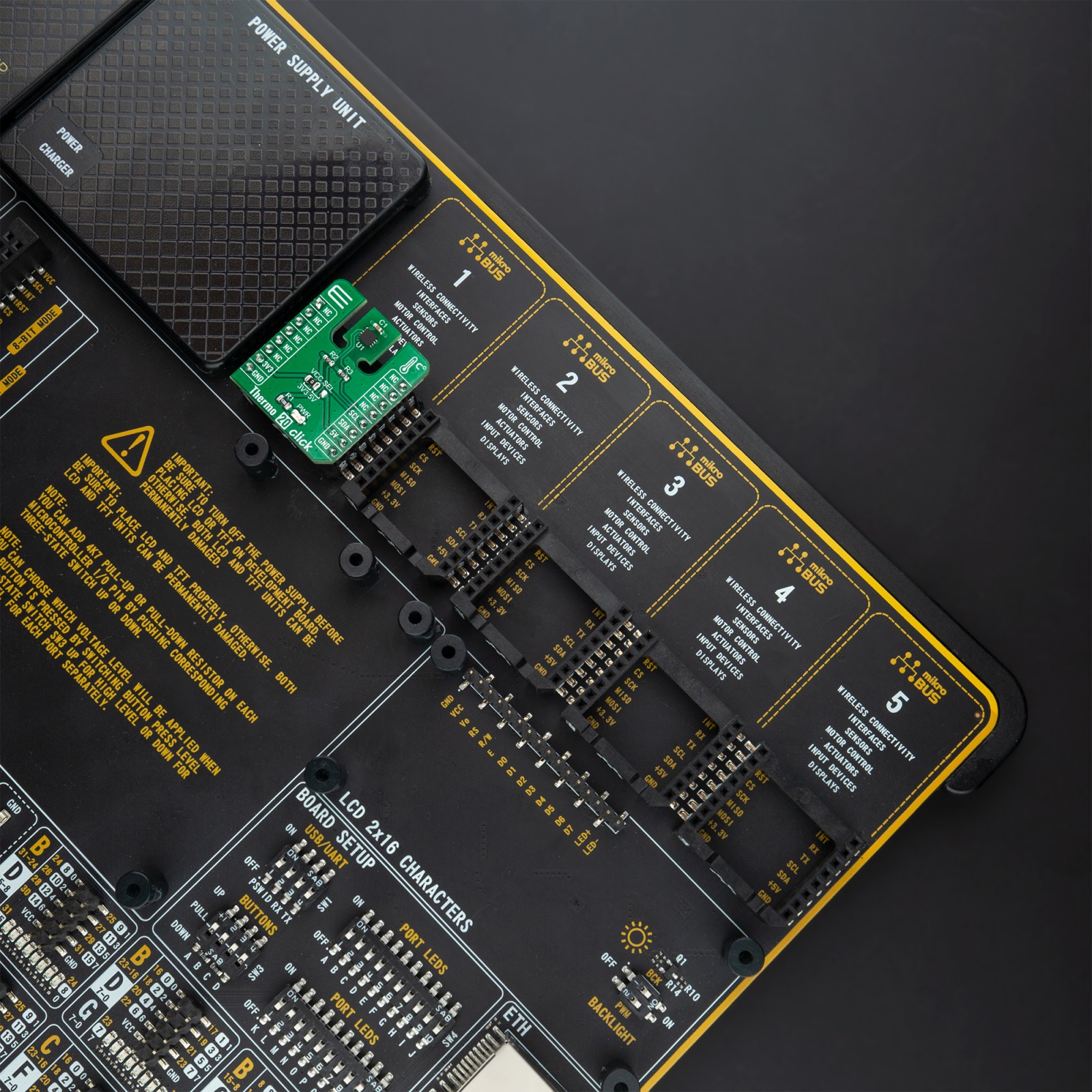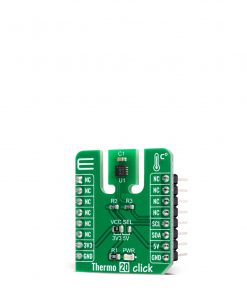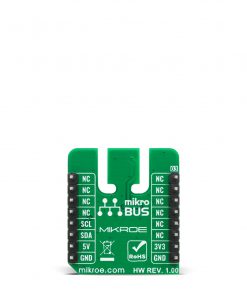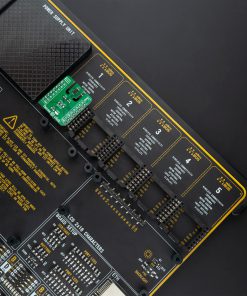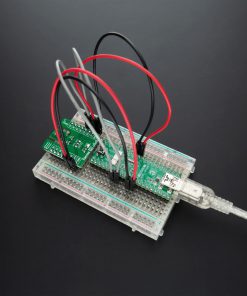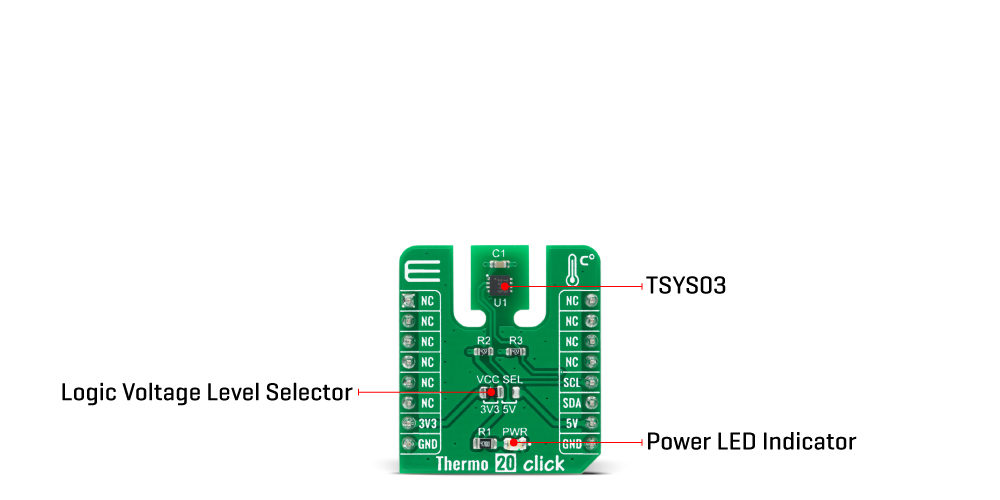Thermo 20 Click
R145.00 ex. VAT
Thermo 20 Click is a compact add-on board that provides an accurate temperature measurement. This board features the TSYS03, a miniature digital temperature sensor that comes up with factory calibrated, highly accurate temperature data from TE Connectivity. This temperature sensor characterized by its accuracy and high resolution offers digital output with a configurable I2C interface, ensures lower conversion time with precise temperature sensing, and provides a low power consumption sensor suitable for battery-driven applications. This Click board™ is appropriate for industrial control, as a replacement of precision RTDs, thermistors, and NTCs, or in any other temperature measurement applications.
Thermo 20 Click is supported by a mikroSDK compliant library, which includes functions that simplify software development. This Click board™ comes as a fully tested product, ready to be used on a system equipped with the mikroBUS™ socket.
Stock: Lead-time applicable.
| 5+ | R137.75 |
| 10+ | R130.50 |
| 15+ | R123.25 |
| 20+ | R118.61 |

